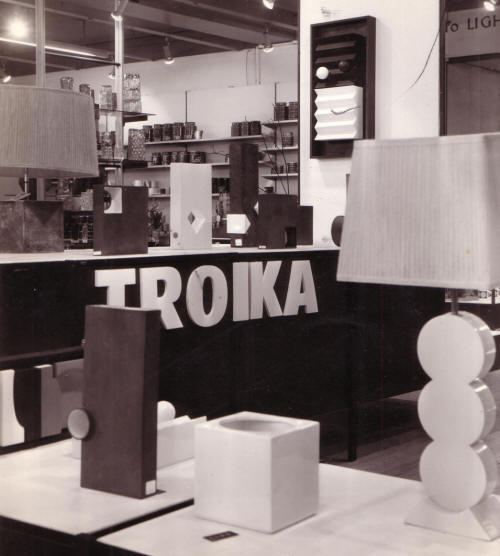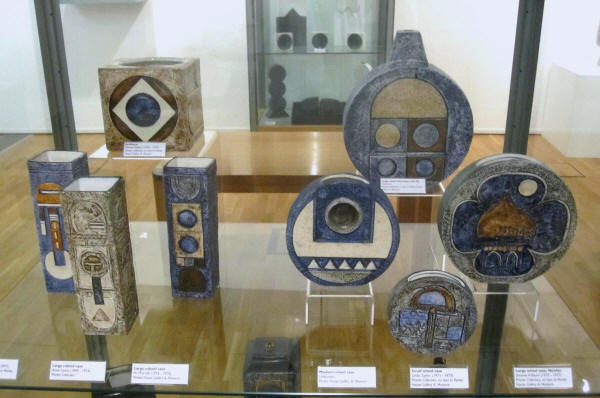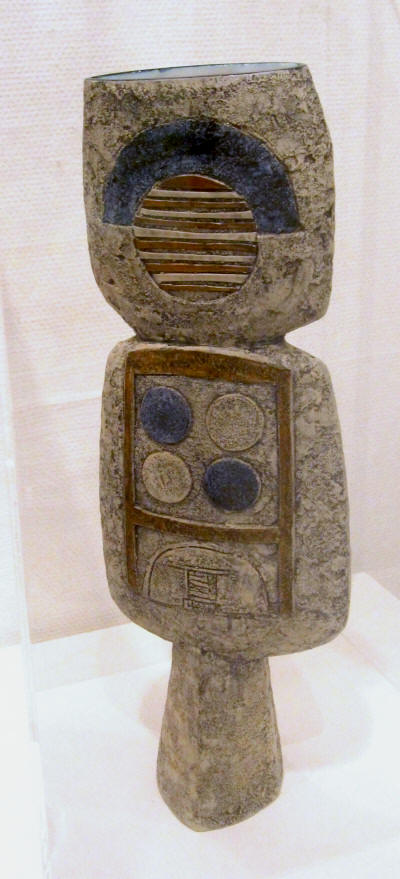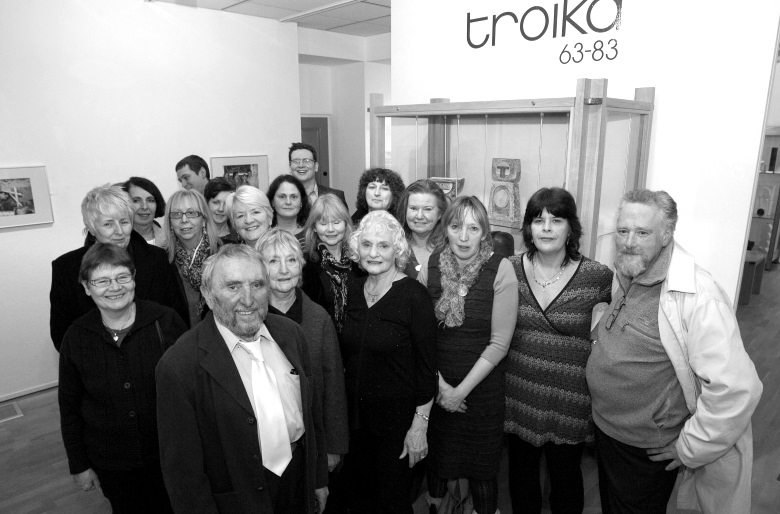|
|
| home | exhibitions | interviews | features | profiles | webprojects | archive |
|
TROIKA: 63 – 83
“Do you know how the name Troika came
about? It’s to do with my grandfather. Perhaps this is mythology, but my
grandfather and his wife escaped from Russia, he escaped dressed as a
woman on a troika; a sledge with three horses. Then of course there were
the three of us and it gelled”. Benny Sirota (ref). The superb
50th Anniversary Exhibition held at Penlee House in 2013 displayed
examples of the whole, varied output over the twenty year period. The
development of the work could therefore be easily surveyed and
appreciated; larger works being shown separately and smaller works in
groups – which particularly suits Troika. However, the range of work that ‘defines’ Troika and is the most easily recognisable are the textured/ sculptural pieces, which were produced continuously between 1967-1983. These are considered by many to be the most successful, both critically and commercially. (fig.2 below left)
The development of this range was born of necessity – as a quote from the painter Bryan Illsley explains: “Moulds wear out very quickly, too quickly to be too much fun or be profitable, so they started scratching in designs onto the pots to disguise the flaws of an old mould. From necessity came design” (ref.). These pieces were further developed by scoring and incising the surfaces of the moulds and also by adding sand and mine slurry to create texture. But it was the decoration which really shone through to bring these works alive. The decorators were given free rein to choose the colours and motifs to accentuate the forms – a bold move and ultimately an act of trust – Leslie Illsley (fig 3 below right) and Benny Sirota being only interested in creating the form and design of the pieces. The ‘signature’ glaze colours used were primarily cobalt blue, copper green and manganese oxides.
With a myriad of designs there were a huge and varied number of pieces made, including urns, mugs, cube, wheel and cylinder vases, double base vases and lamp bases as well as individual works such as ‘anvil’ and ‘pillar’ (fig.4 below left) which were always considered as pure sculpture. Benny Sirota left Troika in 1980 but production continued in Newlyn until the closure in 1983. This was inevitable and was due to a number of factors including increasing financial burdens and also a change in public taste which lead to a decline in orders for craft pottery. A situation which was also experienced by three other established potteries in Newlyn around this time, namely Celtic, Leaper and Tremaen.
On a personal level my wife and I made our first association with Troika on visits to St Ives from 1979 onwards, at first coming across it by chance and making an instant connection with it. I am pleased to say that we were two of the ‘tourists’ mentioned above who bought the work because ‘they liked it’ – surely the only basis for buying art. We were always gratified on returning home with the work to see how well it ‘stood up and held its own’ against other and more established St Ives art. A view that has now been confirmed by many. I feel that Benny Sirota should have the last word though, summing up Troika in 2012 by saying: “It’s fifty years since the creation of TROIKA. I never dreamed, and I’m sure Leslie wouldn’t have dreamed either, that it would have had such a long lasting effect. I only wish Leslie could have been here to see it”
Troika 63-83 was at Penlee House Gallery & Museum, Penzance, January 19th – March 9th 2013. (below - ex- Troika staff at the exhibition by Phil Monckton)
|
|
|




 It
is now widely acknowledged that Troika has taken its rightful place in
the ‘art establishment’ and its output can be seen in many public
galleries and museums as well as in commercial galleries and also
appearing regularly in Antique and Fine Art auctions.
It
is now widely acknowledged that Troika has taken its rightful place in
the ‘art establishment’ and its output can be seen in many public
galleries and museums as well as in commercial galleries and also
appearing regularly in Antique and Fine Art auctions.